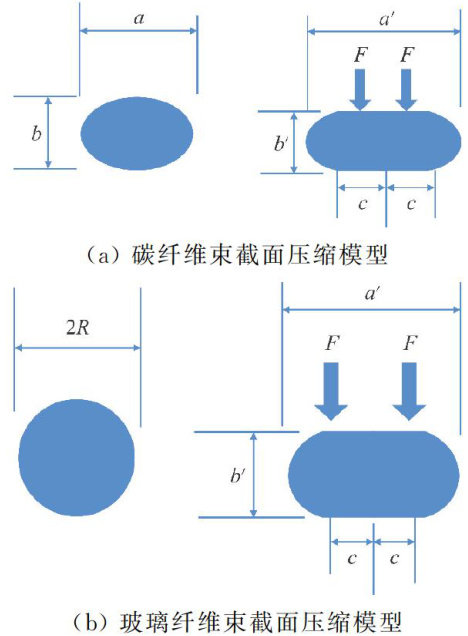CRTM工艺中二维纤维织物压缩变形行为研究


打开文本图片集
中图分类号:TB332 文献标志码:A DOI:10.13338/j.issn.1006-8341.2025.04.007
Abstract Compression resin transfer molding (CRTM) technology enhances the mechanical properties of composite materials by compressng fiber fabrics to increase fiber volume content. This study focuses on the compaction process of two-dimensional fiber fabrics in CRTM technology,combining their organizational structure characteristics and cross-sectional compresson principles. With the Gutowski compression model, a theoretical calculation equation was derived to predict the relationship between the compression load of two-dimensional fabrics and the change in fabric thickness.The experimental data obtained from compression experiments on carbon fiber and glass fiber two-dimensional fabrics were processed using this formula,and the compression coefficients β of different fabrics were obtained. The key factors affecting the compression coefficient β were also revealed. The results indicate that fabrics with higher β values have better compressibility and are more easily compressed. The more layers of fibers there are,the higher the β value of the fabric, and the easier it is to be compressed. The β value of glass fiber is about 50% lower than that of carbon fiber. There was no significant difference in the β values between the dry and wet states of the fabric. With comparing the model calculation results with experimental data,it was found that the two-dimensional fabric compression model derived in this paper can better describe the compression behavior of two-dimensional fabrics.
Keywords composite material; CRTM; two-dimensional fabric;compression model; compressibility
0 引言
纤维增强复合材料凭借其突出的比模量、低密度及可设计性,在汽车船舶与航空航天轻量化领域展现出重要价值。(剩余13508字)